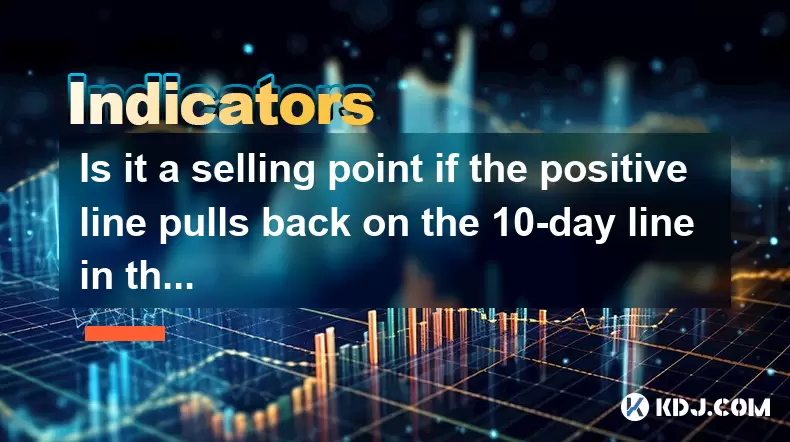-
 Bitcoin
Bitcoin $117400
-0.46% -
 Ethereum
Ethereum $3768
0.60% -
 XRP
XRP $3.551
2.09% -
 Tether USDt
Tether USDt $1.000
0.00% -
 Solana
Solana $203.2
11.30% -
 BNB
BNB $770.9
1.92% -
 USDC
USDC $0.9999
0.01% -
 Dogecoin
Dogecoin $0.2709
-0.02% -
 Cardano
Cardano $0.9024
4.49% -
 TRON
TRON $0.3139
0.60% -
 Hyperliquid
Hyperliquid $45.60
-1.41% -
 Stellar
Stellar $0.4730
-1.34% -
 Sui
Sui $4.025
2.15% -
 Chainlink
Chainlink $19.79
2.19% -
 Hedera
Hedera $0.2724
-2.39% -
 Avalanche
Avalanche $25.93
3.05% -
 Bitcoin Cash
Bitcoin Cash $524.0
-1.83% -
 Shiba Inu
Shiba Inu $0.00001558
0.50% -
 Litecoin
Litecoin $116.7
-0.30% -
 UNUS SED LEO
UNUS SED LEO $8.996
0.00% -
 Toncoin
Toncoin $3.334
1.83% -
 Polkadot
Polkadot $4.506
0.34% -
 Uniswap
Uniswap $10.99
4.83% -
 Ethena USDe
Ethena USDe $1.001
0.03% -
 Pepe
Pepe $0.00001461
3.17% -
 Monero
Monero $320.3
-1.01% -
 Bitget Token
Bitget Token $4.935
0.36% -
 Dai
Dai $0.9998
0.00% -
 Aave
Aave $322.4
-1.25% -
 Bittensor
Bittensor $455.6
9.33%
Is it a selling point if the positive line pulls back on the 10-day line in the downward trend?
A positive candle pulling back to the 10-day MA in a downtrend may signal a temporary pause, offering a potential selling opportunity if confirmed by volume and momentum.
Jun 29, 2025 at 07:35 pm

Understanding the 10-Day Moving Average in a Downtrend
In technical analysis, the 10-day moving average (MA) is a short-term indicator that smooths out price data to help traders identify trends. During a downtrend, prices often fluctuate around this MA line, creating potential entry or exit points. When a positive candlestick forms and then pulls back toward the 10-day MA, it can signal a temporary pause in the selling pressure.
Traders often interpret such a pullback as a possible continuation pattern, especially if the price doesn’t break below the moving average significantly. This behavior may suggest that sellers are still in control but not aggressively pushing the price lower at that moment.
What Does a Positive Candle Pulling Back Mean?
A positive candle refers to a bullish candlestick where the closing price is higher than the opening price. In a downtrend, seeing a positive candle can indicate some buying interest, even if temporary. However, when this candle pulls back toward the 10-day MA, it raises questions about whether the bounce has enough strength to reverse the trend or if it’s just a retracement within the ongoing downtrend.
This situation often leads traders to ask: Is this a buying opportunity, or should we treat it as a trap? The answer lies in how the price reacts after the pullback. If the price finds resistance at the 10-day MA and continues to fall, it reinforces the downtrend. If it bounces off the MA and moves upward, it might be the start of a reversal.
How to Confirm Whether It's a Selling Signal
To determine if the pullback to the 10-day MA is a selling point, traders need to look beyond just the candlestick action. Volume plays a critical role in confirming the strength of the move. A positive candle with low volume during a downtrend might lack conviction from buyers, increasing the likelihood that the downtrend will continue.
Here are key steps to confirm:
- Check the volume during the positive candle — higher volume on the up day suggests stronger buyer participation.
- Observe how the price behaves after touching the 10-day MA — does it bounce back down immediately, or does it hold above?
- Use other indicators like RSI or MACD to gauge momentum — if momentum remains bearish, the pullback may not be sustainable.
If these factors align with bearish sentiment, then the pullback could indeed serve as a selling opportunity rather than a reversal sign.
Using Multiple Timeframes for Better Accuracy
Analyzing the same asset across different timeframes can offer more clarity. For example, what looks like a strong pullback on the daily chart might be a mere consolidation phase on the 4-hour or hourly charts. By zooming into shorter timeframes, traders can spot micro-trends and patterns that may not be visible on the daily chart.
Consider the following:
- On the hourly chart, check if there’s a bearish pattern forming near the 10-day MA.
- Look for key resistance levels that coincide with the 10-day MA — confluence increases the reliability of the signal.
- Ensure that the broader trend on the weekly chart supports the idea of continued weakness.
Combining insights from multiple timeframes helps avoid false signals and improves the probability of making informed decisions.
Practical Steps to Trade the Pullback
For those considering a trade based on this setup, here’s a step-by-step guide:
- Identify the downtrend clearly using trendlines or moving averages.
- Wait for a positive candle to form and pull back toward the 10-day MA.
- Confirm with volume and momentum indicators that the rally lacks strength.
- Place a sell order slightly below the 10-day MA to enter once the price resumes the downtrend.
- Set a stop-loss above the high of the positive candle to manage risk.
- Target a profit level based on recent swing lows or support zones.
This method ensures you're not entering blindly but instead waiting for confirmation that the downtrend is likely to continue.
Common Mistakes to Avoid
Many traders make the mistake of assuming that any pullback to a moving average is a sell signal without analyzing context. Here are common pitfalls:
- Trading against the stronger trend without confirmation.
- Ignoring volume and momentum readings, leading to premature entries.
- Failing to use multiple timeframes, resulting in missed clues about trend strength.
- Not placing proper stop-loss orders, which can lead to large losses if the market reverses unexpectedly.
Avoiding these mistakes requires discipline and a structured approach to technical analysis.
Frequently Asked Questions
Q: Can I rely solely on the 10-day MA for trading decisions in a downtrend?
No, the 10-day MA should be used alongside other tools like volume, RSI, and trendlines to increase accuracy. Sole reliance on a single indicator can lead to false signals.
Q: What if the price breaks above the 10-day MA after a pullback?
That could indicate a potential trend change or at least a pause in the downtrend. Traders should reassess their positions and consider closing short trades if the breakout holds.
Q: How do I know if the pullback is just a retracement and not a reversal?
Look for signs of momentum divergence, volume changes, and whether key resistance levels are holding. A true reversal usually shows stronger and sustained buying pressure.
Q: Should I always wait for the price to touch the 10-day MA before entering a trade?
Not necessarily. Sometimes the price may hover near the MA without touching it. The key is to observe how the price reacts around the area, not strictly at the exact level.
Disclaimer:info@kdj.com
The information provided is not trading advice. kdj.com does not assume any responsibility for any investments made based on the information provided in this article. Cryptocurrencies are highly volatile and it is highly recommended that you invest with caution after thorough research!
If you believe that the content used on this website infringes your copyright, please contact us immediately (info@kdj.com) and we will delete it promptly.
- MoonBull's Whitelist Mania: Your Last Shot at 100x Crypto Gains?
- 2025-07-22 10:30:12
- Meme Coins in 2025: Explosive Gains or Fading Fad?
- 2025-07-22 10:30:12
- Kim Keon-hee Crypto Probe: Scandal Rocks South Korea's Political Scene
- 2025-07-22 10:50:12
- ETH Holders in Profit: Value Surge Fuels Bullish Sentiment
- 2025-07-22 09:30:13
- NEAR Protocol's AI Leap: Double-Digit Gains and Future Potential
- 2025-07-22 09:30:13
- Cryptos, Meme Coins, Buy Now: Riding the Wave of Hype
- 2025-07-22 08:30:13
Related knowledge

Advanced RSI strategies for crypto
Jul 13,2025 at 11:01am
Understanding the Basics of RSI in Cryptocurrency TradingThe Relative Strength Index (RSI) is a momentum oscillator used to measure the speed and chan...

Crypto RSI for day trading
Jul 12,2025 at 11:14am
Understanding RSI in the Context of Cryptocurrency TradingThe Relative Strength Index (RSI) is a momentum oscillator used to measure the speed and cha...

Crypto RSI for scalping
Jul 12,2025 at 11:00pm
Understanding RSI in the Context of Crypto TradingThe Relative Strength Index (RSI) is a momentum oscillator widely used by traders to measure the spe...

What does an RSI of 30 mean in crypto
Jul 15,2025 at 07:07pm
Understanding RSI in Cryptocurrency TradingRelative Strength Index (RSI) is a momentum oscillator widely used in cryptocurrency trading to measure the...

What does an RSI of 70 mean in crypto
Jul 13,2025 at 06:07pm
Understanding the RSI Indicator in Cryptocurrency TradingThe Relative Strength Index (RSI) is a widely used technical analysis tool that helps traders...

Does RSI work in a bear market for crypto
Jul 16,2025 at 01:36pm
Understanding RSI in Cryptocurrency TradingThe Relative Strength Index (RSI) is a momentum oscillator used by traders to measure the speed and change ...

Advanced RSI strategies for crypto
Jul 13,2025 at 11:01am
Understanding the Basics of RSI in Cryptocurrency TradingThe Relative Strength Index (RSI) is a momentum oscillator used to measure the speed and chan...

Crypto RSI for day trading
Jul 12,2025 at 11:14am
Understanding RSI in the Context of Cryptocurrency TradingThe Relative Strength Index (RSI) is a momentum oscillator used to measure the speed and cha...

Crypto RSI for scalping
Jul 12,2025 at 11:00pm
Understanding RSI in the Context of Crypto TradingThe Relative Strength Index (RSI) is a momentum oscillator widely used by traders to measure the spe...

What does an RSI of 30 mean in crypto
Jul 15,2025 at 07:07pm
Understanding RSI in Cryptocurrency TradingRelative Strength Index (RSI) is a momentum oscillator widely used in cryptocurrency trading to measure the...

What does an RSI of 70 mean in crypto
Jul 13,2025 at 06:07pm
Understanding the RSI Indicator in Cryptocurrency TradingThe Relative Strength Index (RSI) is a widely used technical analysis tool that helps traders...

Does RSI work in a bear market for crypto
Jul 16,2025 at 01:36pm
Understanding RSI in Cryptocurrency TradingThe Relative Strength Index (RSI) is a momentum oscillator used by traders to measure the speed and change ...
See all articles

























































































